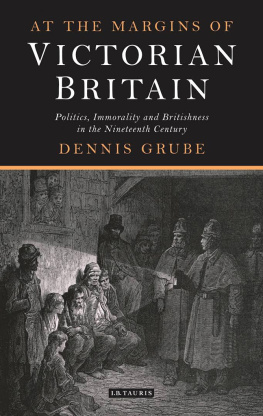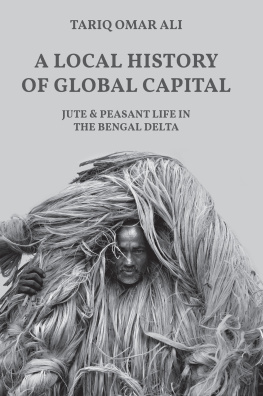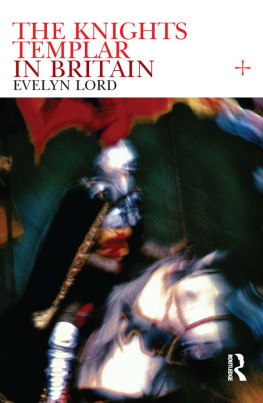ROUTLEDGE LIBRARY EDITIONS:
THE VICTORIAN WORLD
Volume 34
LORD AND PEASANT IN
NINETEENTH CENTURY BRITAIN
LORD AND PEASANT IN
NINETEENTH CENTURY BRITAIN
DENNIS R. MILLS
First published in 1980 by Croom Helm Ltd
This edition first published in 2016
by Routledge
2 Park Square, Milton Park, Abingdon, Oxon OX14 4RN
and by Routledge
711 Third Avenue, New York, NY 10017
Routledge is an imprint of the Taylor & Francis Group, an informa business
1980 Dennis R. Mills
All rights reserved. No part of this book may be reprinted or reproduced or utilised in any form or by any electronic, mechanical, or other means, now known or hereafter invented, including photocopying and recording, or in any information storage or retrieval system, without permission in writing from the publishers.
Trademark notice: Product or corporate names may be trademarks or registered trademarks, and are used only for identification and explanation without intent to infringe.
British Library Cataloguing in Publication Data
A catalogue record for this book is available from the British Library
ISBN: 978-1-138-66565-1 (Set)
ISBN: 978-1-315-61965-1 (Set) (ebk)
ISBN: 978-1-138-65614-7 (Volume 34) (hbk)
ISBN: 978-1-138-65616-1 (Volume 34) (pbk)
ISBN: 978-1-315-62209-5 (Volume 34) (ebk)
Publishers Note
The publisher has gone to great lengths to ensure the quality of this reprint but points out that some imperfections in the original copies may be apparent.
Disclaimer
The publisher has made every effort to trace copyright holders and would welcome correspondence from those they have been unable to trace.
Lord and Peasant
in Nineteenth
Century Britain
Dennis R.Mills
1980 Dennis R. Mills
Croom Helm Ltd, 2-10 St Johns Road, London SW11
ISBN 0-7099-0123-2
British Library Cataloguing in Publication Data
Mills, Dennis Richard
Lord and peasant in nineteenth-century Britain. (Croom Helm historical geography series).
1. Great Britain Rural conditions
2. Social structure Great Britain History 19th century
I. Title
301.4 00941 HN385
ISBN 0-7099-0123-2
First published in the United States 1980 by
Rowman and Littlefield
81 Adams Drive,
Totowa, New Jersey
ISBN 0-8476-6806-1
Typeset by Jay ell Typesetting, London
Printed and bound in Great Britain by Biddies Ltd, Guildford and Kings Lynn
CONTENTS
ABBREVIATIONS
| Agric. Hist. Rev. | Agricultural History Review |
| BPP | British Parliamentary Papers |
| Econ. Hist. Rev. | Economic History Review |
| Scot. Geog. Mag. | Scottish Geographical Magazine |
| Scot. St. | Scottish Studies |
| TIBG | Transactions of the Institute of British Geographers |
| Welsh HR | Welsh Historical Review |
To my parents and the memory of my grandparents,
who taught me my first lessons on the nineteenth century.
Readers of this book who go in search of bias will find it easier to detect if I mention that it owes a great deal to the nature of my upbringing and subsequent places of residence. Born on a Nottinghamshire estate of Lincolnshire peasant stock, I was subject in childhood and youth to the influence of both lord and peasant. For example, the big house provided cinema tickets for Sabu the Elephant Boy and Snow White and the Seven Dwarfs and because my father was the head gardener we went to Chelsea Flower Show on members day. I was inoculated at an early age against paternalism, however, by a strong dose of independence, which came with my mothers milk, for her father was a cottage farmer in a fenside parish, and my own father became a self-employed market-gardener.
Thirty years of wandering since I left the family homestead have taken me to many parts of Britain, where I have had the chance to study lord and peasant from the ground upwards. In south-west Leicestershire I found the traditions of the fox-hunting squires and the framework-knitters an especially fascinating mixture, while in south Cambridgeshire the collective strength of the nonconformist smallholding tradition was something of which I felt myself part. Studies of crofting communities in Lewis, visits to countless stately homes, farm holidays far and wide, hours spent traipsing round the back streets of Nottingham, Leicester, Manchester, Bradford and Leeds and compulsory tours of the Channel coast with the Navy have all had their impact on my view of nineteenth-century Britain.
So long have I been accumulating and sifting material and ideas, it would be impossible to recall the long list of those to whom I am indebted. A very early starting point, however, was the series of lectures on agrarian history given at Nottingham University by the late Prof. David Chambers and his book Nottinghamshire in the Eighteenth Century (2nd edn, Frank Cass, 1966).
The staff of the libraries at Nottingham and Leicester Universities and at The Open University have borne the brunt of my searching in strange corners and I would particularly like to acknowledge the help of Mr Paul Smith. For much help with an early draft I wish to thank my colleague Prof. Michael Drake. Valuable suggestions for restructuring were made by Dr. James Johnston of Bishop Grosseteste College, Lincoln. I was very pleased to have the advice of my colleagues Drs. Rees Pryce and Ian Donnachie on the chapters that relate specifically to their own countries. Dr. Alan Macfarlane and Mr Michael Havinden, of the Universities of Cambridge and Exeter, not only gave generous permission to quote their own work extensively, but also commented on parts of the text. Other acknowledgements are made within the text.
All would have been in vain had not other skills been at hand. The maps have been drawn by Mr John Hunt, cartographer at the Open University. Miss Philippa Wain made the first manuscript intelligible, while the final typescript was prepared by Miss Margaret Martin and Mrs Margaret Golby with Miss Wain coming to the rescue again. The imperfections of the final result, however, must be laid at my own door.
Cat Lane House,
Thornborough, Bucks.
The great figure in the villages of those days was the lord of the manor, for whether he was a duke or a squire, he considered it his duty to make himself responsible for the well-being of the people of his village. Noel Streatfield (ed.), The Day Before Yesterday (Collins, London, 1956), p. 248.
Introduction
The squire figures prominently in many personal models or mental constructs of English village social structure during the last century. It is true that there were more squires, more country gentlemen than there are today, but that does not mean that every village had its squire. There were lordless villages too, and had been for centuries, in which there was not only no resident squire but also no absentee landlord who owned over half the soil. Here the land was divided up among a multiplicity of owners of varying importance perhaps a hundred of them might share three or four thousand acres unequally, the greatest with several hundred acres or a thousand apiece, the smallest with only a cottage and a few roods of garden.






![Harvie Christopher - Nineteenth-century Britain: a very short introduction ; [in memorian Colin Matthew]](/uploads/posts/book/137651/thumbs/harvie-christopher-nineteenth-century-britain-a.jpg)



